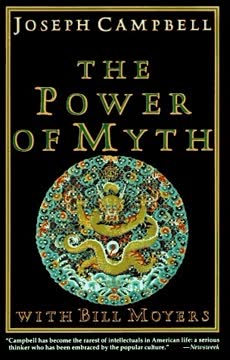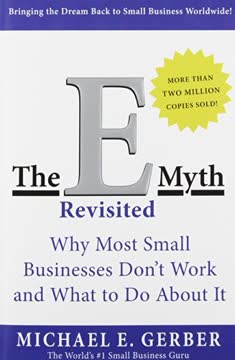Key Takeaways
1. Tough Times Are Temporary; Tough People Endure
Tough times never last, but tough people do!
Endurance over Circumstance. The central message is that while difficult periods are unavoidable, the key to overcoming them lies in personal resilience and strength. It's not about avoiding hardship, but about developing the inner fortitude to persevere.
Examples of Resilience. The book illustrates this with stories of individuals who faced immense challenges:
- Robert Schuller's father surviving the Great Depression and a devastating tornado.
- Mary Martin overcoming the loss of her voice and a near-fatal car accident.
- Benno Fischer surviving the Holocaust and reuniting with his love.
- John Prunty's determination after a paralyzing accident.
- Carol Schuller's recovery and athletic achievements after losing a leg.
Focus on Inner Strength. The emphasis is on cultivating a mindset that refuses to be defeated by external circumstances. This involves developing faith, determination, and a positive outlook, enabling individuals to rise above adversity.
2. Possibility Thinking: The Survivor's Mindset
Nobody is a total failure if he dares to try to do something worthwhile.
Beyond Positive Thinking. Possibility thinking is presented as more than just a feel-good attitude; it's a practical philosophy that translates into an action plan for success. It involves daring to dream, committing to those dreams, and believing in one's ability to achieve them.
Key Components. The core elements of possibility thinking include:
- Embracing challenges as opportunities for growth.
- Refusing to be limited by negative thinking or past failures.
- Maintaining a strong belief in one's potential and the power of faith.
- Taking proactive steps to turn dreams into reality.
Action-Oriented. It's not enough to simply think positively; possibility thinking requires action. This involves setting goals, developing strategies, and persevering through obstacles, always maintaining a belief in the possibility of success.
3. Problems Are Inevitable; Perspective Is a Choice
Never let a problem become an excuse.
Problems as a Universal Experience. The book emphasizes that everyone faces challenges, regardless of their circumstances or achievements. A problem-free life is an illusion, and accepting this reality is the first step towards managing difficulties effectively.
The Power of Perspective. The key difference between those who thrive and those who succumb to tough times lies in their perspective. It's about choosing how to perceive and react to problems, rather than being overwhelmed by them.
Six Principles for Problem Perspective:
- Every living human being has problems.
- Every problem has a limited life span.
- Every problem holds positive possibilities.
- Every problem will change you.
- You can choose what your problem will do to you.
- There is a negative and a positive reaction to every problem.
4. Manage Problems Positively: Twelve Guiding Principles
Play it down and pray it up.
Practical Strategies. The book provides a set of actionable principles for managing problems constructively, moving beyond mere positive thinking to concrete steps. These principles offer a framework for navigating challenges with resilience and creativity.
Twelve Principles for Positive Problem Management:
- Don't underestimate the problem or your potential.
- Don't exaggerate the problem.
- Don't wait for someone else to solve it.
- Don't aggravate the problem with negative emotions.
- Illuminate the problem by understanding it thoroughly.
- Motivate yourself to take positive action.
- Bait the solution by creating opportunities.
- Date different solutions to find the best fit.
- Sublimate the problem by finding a higher purpose.
- Dedicate yourself fully to the solution.
- Communicate and seek help when needed.
- Insulate yourself from negative influences.
Action and Attitude. These principles emphasize a combination of proactive steps and a positive mental attitude, empowering individuals to take control of their problems and work towards resolution.
5. Take Control: Don't Surrender Your Leadership
People who take care never get anywhere!
Active Leadership. The book stresses the importance of taking charge of one's life and refusing to surrender control to external forces. This involves actively selecting dreams, setting goals, and propelling oneself towards success.
Common Pitfalls. The book identifies several areas where people often relinquish control:
- Outside forces like property, poverty, or finances.
- Negative influences like faces, farces, or fences.
- Internal struggles like frustrations, fantasies, or fears.
- Physical and emotional limitations like fatigue or faults.
- External pressures like facts, forecasts, or foes.
Faith as the Ultimate Guide. The book advocates surrendering leadership to faith, allowing it to guide decisions and actions. This involves trusting in a higher power and believing in the possibility of overcoming obstacles.
6. The Ten Commandments of Possibility Thinking
It’s impossible to fail totally if you dare to try.
Managing Ideas. Possibility thinking is presented as a disciplined approach to managing ideas, separating positive thoughts with potential for good from negative ones. It's about giving every idea a chance, even if it seems impossible at first.
Ten Commandments for Possibility Thinking:
- Never reject a possibility because you see something wrong with it.
- Never reject a possibility because you won't get the credit.
- Never reject an idea because it's impossible.
- Never reject a possibility because your mind is already made up.
- Never reject an idea because it's illegal.
- Never reject an idea because you don't have the resources.
- Never reject an idea because it will create conflict.
- Never reject an idea because it's not your way of doing things.
- Never reject an idea because it might fail.
- Never reject an idea because it's sure to succeed.
Embracing Potential. These commandments encourage readers to challenge their assumptions, overcome their fears, and embrace the potential for success that lies within every idea.
7. Count to Ten and Win: A Creative Problem-Solving Game
Beginning is half done.
Structured Creativity. The book introduces a practical technique for solving seemingly insurmountable problems: the "Possibility Thinking Game." This involves listing ten possible solutions, breaking down the problem into manageable steps.
Game-Playing Mindset. The "game" approach fosters a risk-taking, record-breaking, and commitment-freeing mindset, allowing for greater creativity and innovation. It removes the pressure of failure and encourages experimentation.
The Power of "Possibility." The word "possibility" itself has a transformative effect, unlocking creative potential and challenging limiting beliefs. It opens the mind to new solutions and inspires action.
8. Faith: The Power to Move Mountains, Phase by Phase
God’s delays are not God’s denials.
Faith as a Process. The book emphasizes that faith is not a passive belief, but an active process that unfolds in distinct phases. Each phase is crucial for realizing the full potential of faith and achieving seemingly impossible goals.
Five Phases of Mountain-Moving Faith:
- Nesting Phase: Believing in the initial idea.
- Testing Phase: Evaluating the idea against one's values.
- Investing Phase: Committing time, energy, and resources.
- Arresting Phase: Overcoming obstacles and setbacks.
- Cresting Phase: Achieving the desired outcome.
Persistence and Trust. The key to success lies in persevering through each phase, maintaining trust in God's plan, and refusing to give up in the face of adversity.
9. Prayer: The Ultimate Source of Strength and Guidance
It takes guts to leave the ruts.
Beyond Technique. While the book offers practical strategies for managing problems, it ultimately emphasizes the importance of prayer as the foundation for success. Prayer is presented as a source of guidance, strength, and renewal.
Renewing Strength Through Prayer. The book outlines a process for renewing one's spirit during difficult times, using the acronym RENEW:
- Review your past successes and sources of strength.
- Examine all the possibilities for the future.
- Name the price you're willing to pay to achieve your goals.
- Elect the best possibility, regardless of the cost.
- Wait and work patiently, trusting in God's timing.
Trusting in God's Plan. Prayer is not just about asking for help; it's about aligning oneself with God's will and trusting in His guidance, even when the path ahead is unclear.
10. Alphabet for Action: A Positive Path to Tomorrow
Today’s decisions are tomorrow’s realities.
Actionable Steps. The book concludes with a call to action, providing an "Alphabet for Action" to inspire readers to take concrete steps towards a brighter future. Each letter represents a positive verb, encouraging readers to embrace a proactive and optimistic approach to life.
The Power of Positive Language. The book emphasizes the importance of choosing positive words and thoughts, as they have the power to shape one's mood, attitude, and ultimately, destiny.
Embracing the Journey. The book encourages readers to embrace the journey of life, with all its challenges and triumphs, and to trust in their ability to create a positive future through faith, action, and a unwavering commitment to possibility thinking.
Last updated:
FAQ
1. What is "Tough Times Never Last, But Tough People Do!" by Robert H. Schuller about?
- Overcoming adversity: The book is a motivational guide focused on how individuals can survive and thrive during difficult periods in life.
- Possibility Thinking philosophy: Schuller introduces and explains his core concept of "Possibility Thinking," which is about seeing opportunities in problems and believing in positive outcomes.
- Personal stories and examples: The author shares personal anecdotes, stories of others, and practical advice to illustrate how tough people endure and succeed.
- Action-oriented approach: The book provides step-by-step principles, commandments, and an "Alphabet for Action" to help readers take control and move forward.
2. Why should I read "Tough Times Never Last, But Tough People Do!" by Robert H. Schuller?
- Practical strategies for resilience: The book offers actionable advice for managing and overcoming life's toughest challenges.
- Inspirational real-life stories: Schuller’s personal experiences and those of others provide hope and motivation for readers facing adversity.
- Focus on positive mindset: The emphasis on "Possibility Thinking" helps readers shift from negative to positive thinking, which is crucial for personal growth.
- Guidance for all situations: Whether facing financial, health, or emotional problems, the book’s principles are universally applicable.
3. What are the key takeaways from "Tough Times Never Last, But Tough People Do!" by Robert H. Schuller?
- Problems are universal and temporary: Everyone faces problems, but no problem lasts forever; tough people outlast tough times.
- Attitude determines outcome: How you perceive and react to problems is more important than the problems themselves.
- Possibility Thinking is essential: Believing in solutions and opportunities, even when they seem impossible, is the foundation of resilience.
- Action and faith are required: Success comes from taking initiative, managing your response, and maintaining faith through adversity.
4. What is "Possibility Thinking" in "Tough Times Never Last, But Tough People Do!" by Robert H. Schuller?
- Definition: Possibility Thinking is the practice of focusing on what can be done, rather than what cannot, and believing that solutions exist for every problem.
- Key elements: It involves dreaming big, taking risks, refusing to quit, and seeing failure as an event, not a person.
- Practical application: Schuller provides the "Ten Commandments of Possibility Thinking" to help readers systematically apply this mindset.
- Impact: Possibility Thinking transforms obstacles into opportunities and is the core reason why tough people survive tough times.
5. How does Robert H. Schuller suggest readers manage problems in "Tough Times Never Last, But Tough People Do!"?
- Twelve Principles for Managing Problems: Schuller outlines twelve actionable steps, such as not underestimating or exaggerating problems, not waiting, and motivating yourself.
- Perspective shift: He encourages readers to put problems in proper perspective, recognizing that everyone has them and they are temporary.
- Positive reactions: The book emphasizes choosing positive responses over negative ones, such as turning pain into poetry rather than profanity.
- Problem management over problem-solving: Not all problems can be solved, but all can be managed creatively and constructively.
6. What are the "Ten Commandments of Possibility Thinking" in "Tough Times Never Last, But Tough People Do!"?
- Never reject a possibility: Don’t dismiss ideas just because you see something wrong with them or because they seem impossible.
- Don’t worry about credit: Focus on results, not recognition.
- Be open-minded: Don’t reject ideas because your mind is already made up or because they’re not your way of doing things.
- Embrace risk and failure: Don’t reject ideas because they might fail; risk is part of progress.
- Pursue success: Don’t avoid ideas just because they’re sure to succeed; success enables you to help others.
7. How does faith play a role in overcoming adversity according to "Tough Times Never Last, But Tough People Do!" by Robert H. Schuller?
- Five phases of faith: Schuller describes faith as a process with nesting, testing, investing, arresting, and cresting phases, each requiring perseverance.
- Faith as action: Faith is not passive; it involves taking steps, making commitments, and persisting through setbacks.
- Faith moves mountains: The book emphasizes that faith, even as small as a mustard seed, can lead to miraculous outcomes.
- Faith and possibility thinking: Faith underpins the belief that with God, all things are possible, reinforcing the core message of resilience.
8. What practical steps does "Tough Times Never Last, But Tough People Do!" by Robert H. Schuller offer for taking action during tough times?
- Alphabet for Action: Schuller provides an A-to-Z list of action verbs (e.g., Affirm, Believe, Commit, Dare, Educate) to guide readers in proactive behavior.
- Count to Ten and Win: He introduces a creative problem-solving game where you list ten possible solutions to any problem, encouraging brainstorming and action.
- Take charge and control: The book stresses not surrendering leadership of your life to outside forces, fears, or negative influences.
- Begin and never quit: Schuller insists that starting is half the battle, and persistence is key to eventual success.
9. What are some of the most powerful quotes from "Tough Times Never Last, But Tough People Do!" by Robert H. Schuller and what do they mean?
- "Tough times never last, but tough people do!" – The central message: adversity is temporary, but resilient people endure and overcome.
- "When you’ve exhausted all possibilities, remember this: You haven’t!" – Encourages relentless creativity and persistence in problem-solving.
- "If it’s going to be, it’s up to me." – Stresses personal responsibility and initiative in shaping your future.
- "Failure is an event, not a person." – Reminds readers not to internalize setbacks, but to see them as learning opportunities.
10. How does Robert H. Schuller use personal stories and examples in "Tough Times Never Last, But Tough People Do!"?
- Family and personal adversity: Schuller shares his own experiences with poverty, natural disasters, and family health crises to illustrate resilience.
- Stories of others: The book features stories of people like Mary Martin, Benno Fischer, John Prunty, and his daughter Carol, showing how diverse individuals overcame severe challenges.
- Lessons from each story: Each narrative is used to highlight a principle or method, making the advice relatable and actionable.
- Inspiration through real-life outcomes: These stories serve to motivate readers by showing that ordinary people can achieve extraordinary results.
11. What does "Tough Times Never Last, But Tough People Do!" by Robert H. Schuller say about the importance of attitude and perspective?
- Attitude over circumstances: Schuller argues that your reaction to problems is more important than the problems themselves.
- Positive thinking attracts support: Maintaining a positive outlook draws help and opportunities, while negativity repels them.
- Perspective on problems: The book teaches that problems are not unique, are temporary, and often contain hidden opportunities.
- Choosing your response: Readers are encouraged to consciously choose positive, constructive reactions to adversity.
12. How can readers apply the lessons from "Tough Times Never Last, But Tough People Do!" by Robert H. Schuller to their own lives?
- Adopt Possibility Thinking: Practice seeing opportunities in every challenge and refuse to give up on your dreams.
- Follow the action steps: Use the Twelve Principles for Managing Problems, Ten Commandments of Possibility Thinking, and the Alphabet for Action as daily guides.
- Maintain faith and hope: Cultivate faith in yourself, your ideas, and a higher power to sustain you through tough times.
- Take responsibility and act: Don’t wait for others to solve your problems; take charge, start now, and persist until you succeed.
Review Summary
Tough Times Never Last, But Tough People Do! receives mostly positive reviews, with readers praising its motivational content and practical advice for overcoming challenges. Many find the book inspiring, with memorable quotes and anecdotes that provide encouragement during difficult times. Some readers appreciate its accessibility and relevance even years after publication. While a few critics find it lacking originality, most reviewers recommend it as a valuable resource for developing resilience and maintaining a positive outlook in the face of adversity.
Similar Books










Download PDF
Download EPUB
.epub digital book format is ideal for reading ebooks on phones, tablets, and e-readers.




